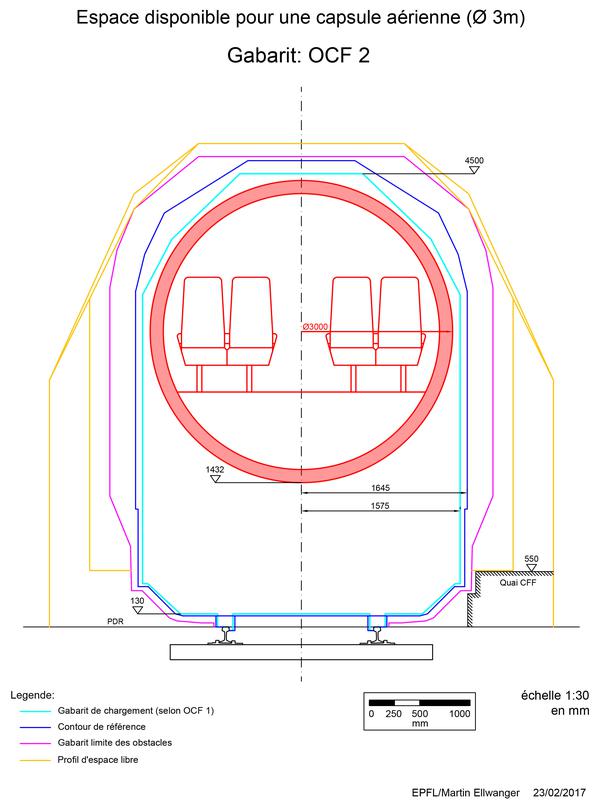From rail to sky in a Clip-Air capsule

In his Master’s project, Martin Ellwanger focused on a critical phase of the project.© 2017 EPFL
Summer series - students works. For his Master’s project, Martin Ellwanger worked on the capsules that are an integral part of the Clip-Air modular airplane. He defined the capsules’ maximum dimensions for various railway loading gauges and analyzed several ways of loading the capsules onto train wagons.
Martin Ellwanger is really into trains and rail infrastructure. So being able to come up with a Master’s project in the transport field was a real stroke of luck. And the fact that it had to do with Clip-Air – the project to develop a modular airplane with the flexibility of rail travel – was the cherry on the cake. “In addition to the train aspect,” says Ellwanger, a civil engineering student, “I was really excited about working on a groundbreaking project – even if it takes 50 years to really take off.” In his Master’s project, he focused on a critical phase of the project: the technical challenge of transporting Clip-Air capsules on trains and methods for transloading the capsules, i.e., transferring them onto train wagons.
Clip-Air is an ambitious project to radically restructure air travel. The project is based on passenger and cargo capsules that detach from a supporting structure composed of a flying wing, engines, the cockpit and landing gear. The capsules will be designed to simply clip onto the flying wing. This innovative structure could make air travel as flexible as rail transport, by linking airports to train stations. The capsules would be loaded onto trains at the airport and delivered directly to train stations – or even companies.
Four seats across

Ellwanger started out by calculating the dimensions of the capsules so that they can travel on railways. Loading gauges differ between Switzerland, the rest of continental Europe, the UK and the United States: the first two are very similar, apart from height standards; UK gauges are narrower; and US gauges are wider. Since the idea is to transport the capsules both by air and by rail, the first step was to define a standard capsule size.
After factoring in a number of constraints – diameter, length, wheel base and cantilevers – dictated by both Swiss and continental European standards, Ellwanger settled on a diameter of 3 meters and a length of 27 meters (with the exception of the British system, where capsules cannot exceed 21 meters). “With this diameter, we can put four seats abreast,” says Ellwanger. He studied the Lausanne-Geneva section of the railway and concluded that a capsule three meters in diameter would not impede rail traffic in any way. And in the United States, a 3.5-meter-diameter capsule could fit five seats across. That’s less than the diameter of the Airbus A320 and the Boeing 737, which is close to four meters.
The other technical component that Ellwanger studied was transloading, or transferring the capsules onto custom-fit train wagons. He looked at three possible lifting mechanisms: from the top, where the capsule hooks onto the wing; from the bottom, with a cradle system; or a combination of the two. In the end, he selected two variants: one, a combination of a gantry crane and a transfer carriage, not unlike today’s container loading system; the other, a railway wagon with retractable wheels that can operate on both the tarmac and the rails. These wagons include the gripper-arm and lifting mechanism. With the second variant, the capsule can be no longer than 24 meters.
Still some work to do
“We are obviously still at the idea stage, and there are lots of other aspects to work on,” says Ellwanger. “But at least my project shows that transporting Clip-Air capsules by train is feasible.” That said, he is under no illusions: “Before the first Clip-Air train leaves the station, further analyses will be needed on the train wagons, the gripper-arm system and the layout of the train stations.”

